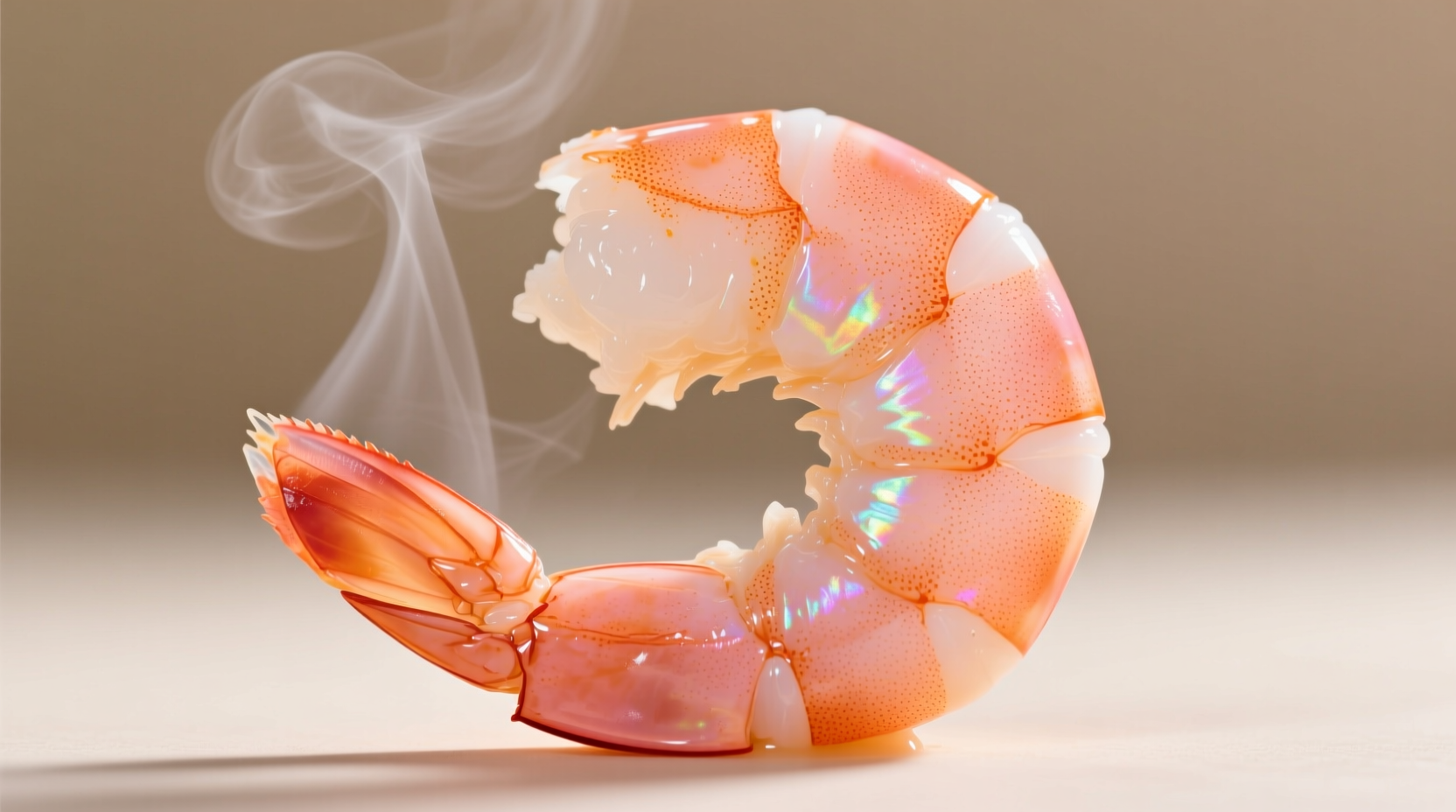Mastering the Perfect Shrimp: Your Complete Visual Guide
Knowing exactly when shrimp is cooked separates decent seafood dishes from exceptional ones. Whether you're sautéing, boiling, or grilling, these science-backed indicators prevent rubbery overcooking and dangerous undercooking. Let's explore the precise signals that guarantee restaurant-quality results in your kitchen.
The Color Transformation: Your First Visual Clue
Watch for the dramatic color shift as shrimp cooks. Raw shrimp appears translucent gray-blue with possible greenish hints. As proteins denature during cooking, they turn completely opaque with vibrant pink-orange hues. The transformation follows this sequence:
| Cooking Stage | Color Appearance | Texture Indicator |
|---|---|---|
| Raw | Translucent gray-blue | Soft, jelly-like |
| 1/4 Cooked | Beginning opacity at edges | Firming at edges |
| 1/2 Cooked | 50% opaque pink | Firm but yielding |
| Perfectly Cooked | Completely opaque pink-orange | Firm with slight spring |
| Overcooked | Bright white, matte finish | Hard, rubbery |
This color progression occurs because heat causes shrimp's muscle fibers to contract and proteins to denature. The opaque appearance indicates complete protein coagulation, which is essential for both food safety and optimal texture. According to the USDA Food Safety and Inspection Service, properly cooked shrimp should never retain any translucent areas.
Shape Tells the Story: The 'C' vs 'O' Test
Examine the shrimp's curvature as it cooks. Perfectly cooked shrimp forms a relaxed 'C' shape. This happens because the muscle fibers contract evenly during proper cooking. When shrimp overcooks, the fibers contract excessively, causing the shrimp to curl tightly into an 'O' shape.
Professional chefs use this visual cue as their primary indicator when cooking without thermometers. The 'C' shape represents the sweet spot between undercooked (straighter form) and overcooked (tight 'O'). This transformation occurs rapidly—often within 30 seconds—so constant monitoring is essential.

Temperature Precision: The Food Safety Standard
For absolute certainty, use an instant-read thermometer. Shrimp reaches safe eating temperature at 120°F (49°C), significantly lower than most meats. This precise temperature ensures:
- Complete destruction of harmful pathogens like Vibrio
- Optimal texture without toughness
- Maximum flavor retention
The FDA Food Code confirms that seafood is safe when cooked to minimum internal temperatures that eliminate pathogens while preserving quality. Unlike chicken or pork, shrimp requires lower temperatures because its structure differs significantly from land animals.
Cooking Method Variations: Adjusting for Technique
Different cooking methods require slight adjustments to your timing and visual assessment:
Boiling/Simmering
Drop shrimp into vigorously boiling salted water. They'll cook in 2-3 minutes. Remove immediately when they float to the surface and turn opaque. Residual heat continues cooking, so undercook slightly.
Pan-Searing
Cook over medium-high heat 1-2 minutes per side. Look for golden edges with pink centers that gradually turn opaque. The sizzle should remain consistent—if it stops, the pan's too hot.
Grilling
Use medium heat (375-400°F) for 2-3 minutes per side. Watch for the color change and 'C' shape formation. Skewer shrimp for easier flipping without tearing delicate flesh.
Avoid These Common Shrimp Cooking Mistakes
Even experienced cooks make these critical errors:
- Overcrowding the pan - lowers temperature, causing steaming instead of searing
- Not drying shrimp first - prevents proper browning and causes splattering
- Seasoning too early - salt draws out moisture, resulting in less flavorful shrimp
- Using frozen shrimp directly - excess water creates steam pockets that prevent even cooking
Troubleshooting Your Shrimp Results
Undercooked shrimp appears translucent, especially in the thickest part, and feels soft and jelly-like. Return to heat for 30-60 seconds, checking frequently.
Overcooked shrimp becomes tough and rubbery with a tight 'O' shape. While you can't reverse overcooking, marinating in acidic ingredients like lemon juice can slightly tenderize the exterior.
Inconsistent cooking often results from uneven shrimp sizes. Always sort by size before cooking and add larger pieces first.
Pro Tips for Perfect Shrimp Every Time
Season shrimp just before cooking with salt, pepper, and optional garlic powder. The salt helps retain moisture during the brief cooking window. For enhanced flavor, add a splash of dry white wine or lemon juice during the last 30 seconds of cooking.
Rest cooked shrimp for 2-3 minutes off heat. This allows residual cooking to complete gently while redistributing juices. Never leave shrimp in hot pans—the retained heat will continue cooking them past perfection.











 浙公网安备
33010002000092号
浙公网安备
33010002000092号 浙B2-20120091-4
浙B2-20120091-4